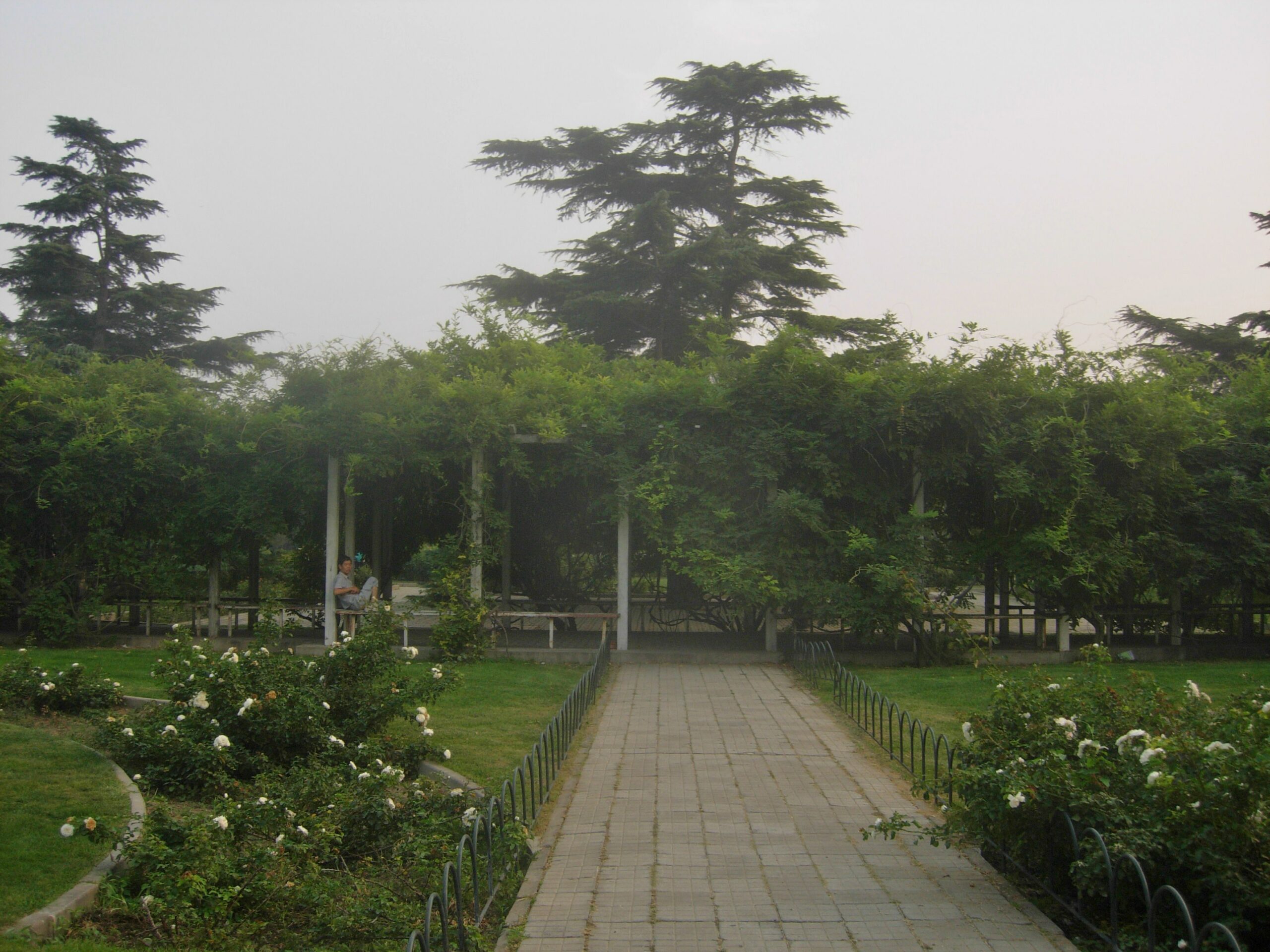
Beijing trees
The source of China’s environmental problems, most broadly stated, is people,” says Philip Dong who references the country’s industrialization. As project coordinator for China’s non-profit organization, FutureGenerations, Dong, has argued that the population is the leading factor in energy and resource consumption. As the population of 1.4 billion continues to grow, heavy industries and public demand for electricity results in rapid coal production, which amounts to high levels of air pollution. To create electricity, says Dong, the Chinese government has diverted water resources through hydroelectric dams and irrigation of farmland.
In addition to the state’s “energy intensive project”, foreign companies have taken advantage of cheap labor, tax evasions, and lax environmental standards by sourcing their production to China. “Even if environmental regulations were better, the sheer volume of products being produced in China would create a big impact on the environment,” argues Dong.
Fostering awareness
Future Generations has made its mission to educate communities about problems facing the environment in hopes of reducing the strain on natural resources. The organization works with youth volunteers in urban and rural areas to spread awareness. The government – leading advocate of renewable energy investment in the world – is aware of the link between environmental health and China’s rapid economic development, Dong adds. “They are constantly strengthening environmental regulations and are more and more conscious of the total (including environmental) cost of development and including that as a factor in policy-making.”
Mark Englehart Evans, technical director of Joint U.S.-China Collaboration on Clean Energy (JUCCCE), concentrates on China’s growth. “Though nearly every country in the world shares blame for our current environmental problems, China’s population and economic growth in the past 30 years surpasses any other society’s in human history,” says Evans. With rapid economic expansion creating serious challenges of food, electricity, and housing for the Chinese, and with global climate crisis an accepted fact among state officials, the government has “committed massive spending and resources to creating smarter growth,” says Evans, who sees the government’s inability to slow down growth.
Energy smart China
One such program the government has sponsored is the JUCCCE Smart Grid Cooperative, a group of national and international experts working together to develop China’s electrical grid. Called “Smart Grid”, experts link all energy generators, deliverers, and users of energy, across China. The revolutionary program, “allows more control over when energy is used, where it is being used, and where it is coming from, thereby reducing this tremendous energy waste in the system.” According to Evans, the Chinese government is greening its existing grid by “decommissioning older coal plants.”
JUCCCE has also worked with the National Academy for Mayors of China in training 150 mayors, representing 350 million people, and 50 state-owned enterprise executives in urban planning. Mayors across different sectors who are shaping the rapid urbanization of China and heads of industries who use 70 percent of all energy are being trained on methods in building “Energy Smart Cities.”
More importantly, JUCCCE is enabling youth to make smarter energy decisions. Not only has the organization distributed 130,000 energy efficient light bulbs to communities across seven Chinese cities in China, but it has also trained students in green advocacy such as alternative heating solutions.
China’s first eco-city?
Peter Head, project manager at global design, engineering, and business consultancy Arup, predicts that by 2030, the global energy consumption will be “two-thirds higher than today.” He argues that as urbanization is one of the biggest drivers of growth in energy consumption, action is essential in improving sustainability of new and existing cities worldwide. A believer in the emerging “ecological age”, an era of environmentally conscious behaviors and practices, Head is involved in developing a master plan for China’s first ecological city.
In August 2005, Arup was contracted by property developer Shanghai Industrial Investment Corporation (SIIC), to produce a master plan and sustainability guidelines for an eco-city called Dongtan. Located at the south-east tip of the world’s largest alluvial island (Chongming), Dongtan brings new hope in greening China. It was by virtue of a signed cooperation agreement between Arup and SIIC to build a zero carbon city for up to 500,000 people. Though implementation of the master plan has been postponed, the Dongtan project led to joint research programs between UK and Chinese universities.
The real deal

Dr John D. Lui. Courtesy of John D. Liu
Meanwhile, China is cleaning its act in artistic ways too. As director of the non-profit organization Environmental Education Media Project (EEMP), Dr. John D. Liu has been concerned with pollution in China since 1979. At the time, the Chinese knew little of the consequences of rapid industrial growth, so he decided to bring environmental films to China.
Since 1997, Liu has brought 1000 environment educational films to the Chinese people, used for television, schools and environmental groups. He has also taken part in building the library for the State Environmental Protection Administration (SEPA) – now the Ministry of Environment. Liu continues to be involved in various projects around the world to restore ecosystems and encourage Chinese individuals to lead “enlightened ecological lifestyles”. He says, “If human beings have sufficient understanding and awareness then they can be ecologically positive, but if human beings are ignorant of their relationship with the Earth and Earth systems then they can be a very destructive force.” EEMP has received tremendous support from the European Union, World Bank, and United Nations for its public awareness on environmental issues and sustainable resource use.
The solutions brought forth by experts from China’s public and private sectors can serve as examples for other nations whose cities and industries are also sprawling. With China having one-fifth of the world’s population, environmental challenges remain, but they are reference points for case studies in building sustainable strategies for population growth and urban development.





